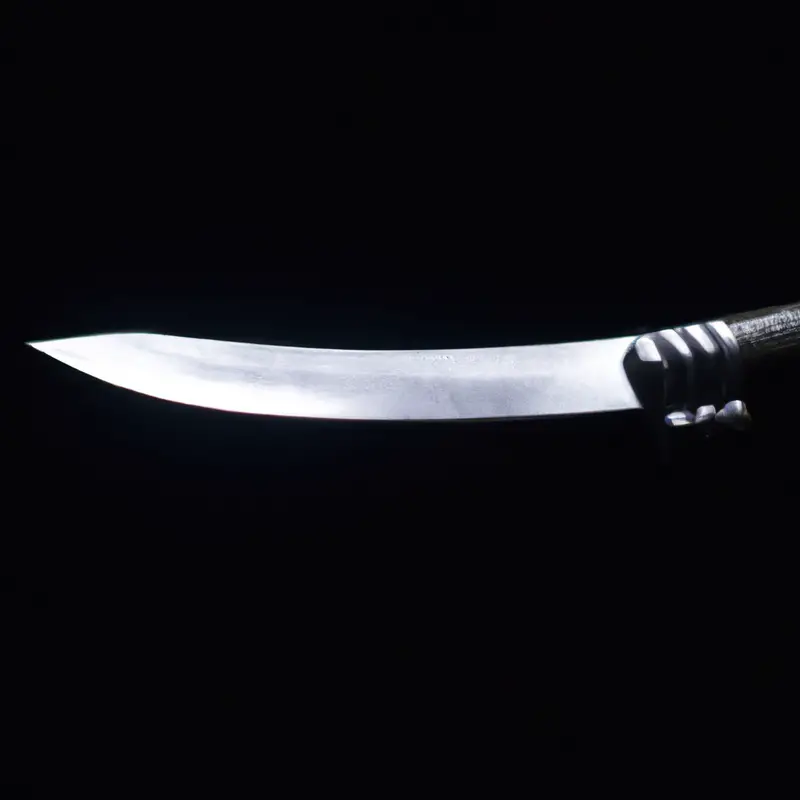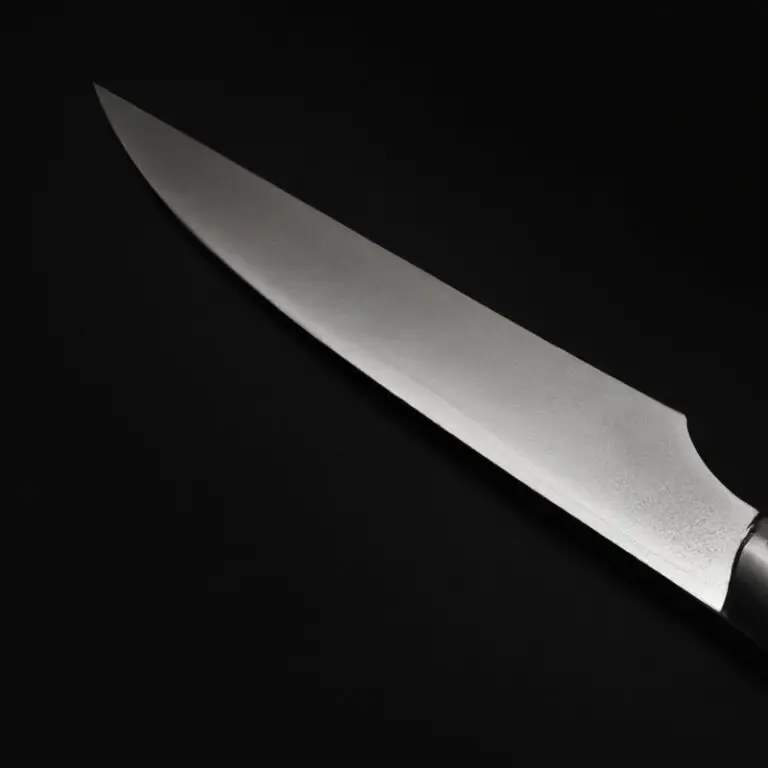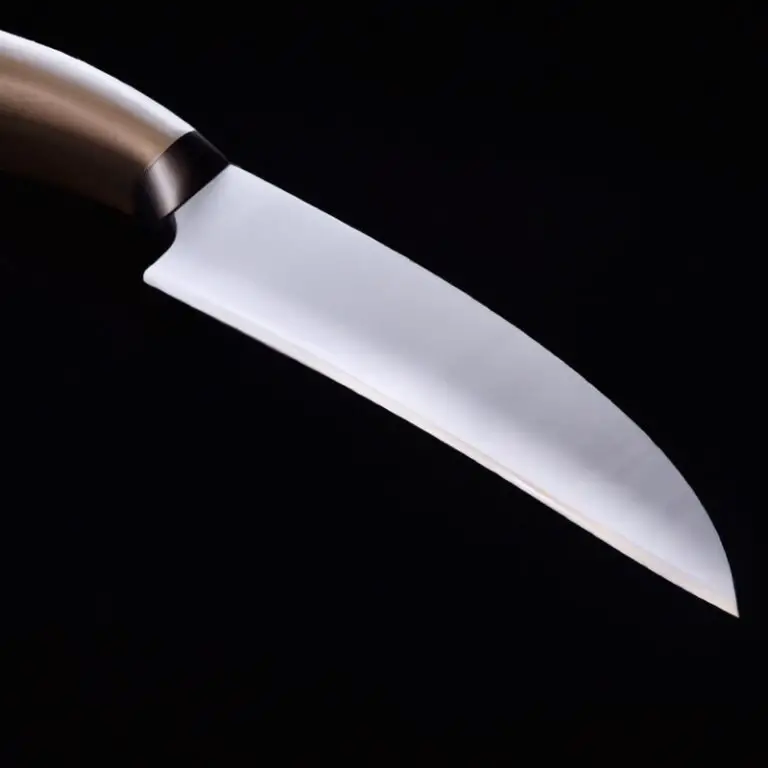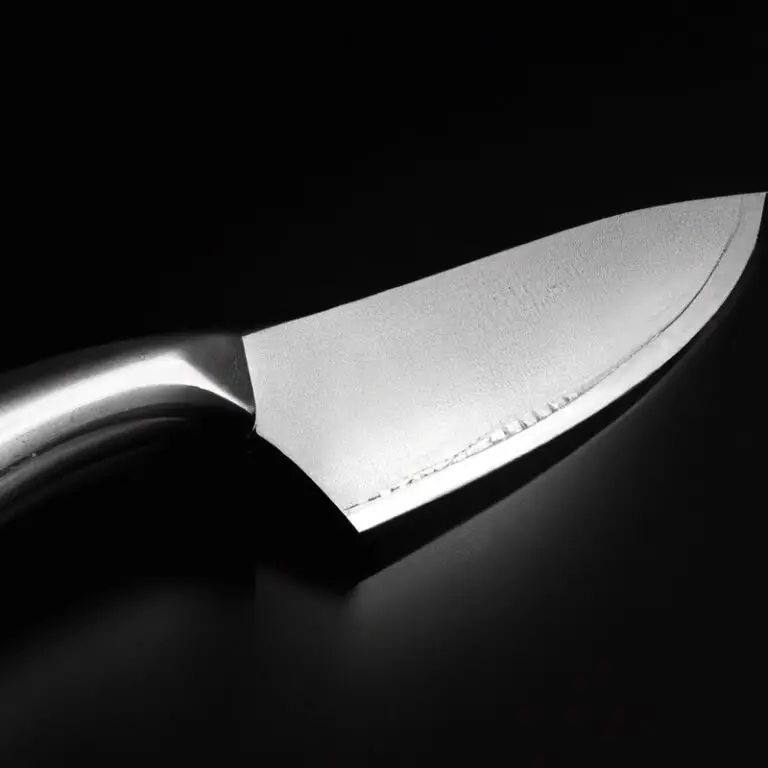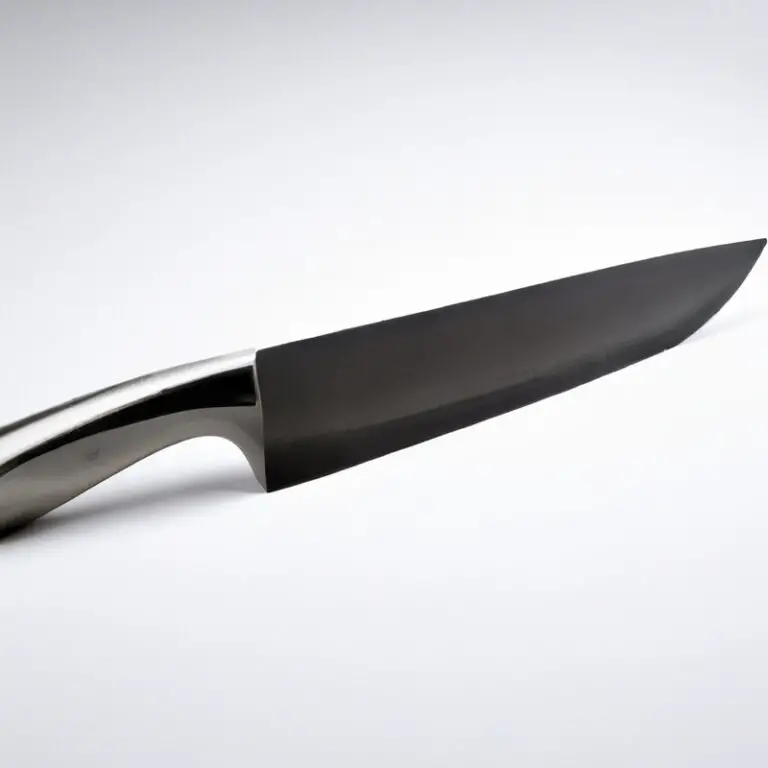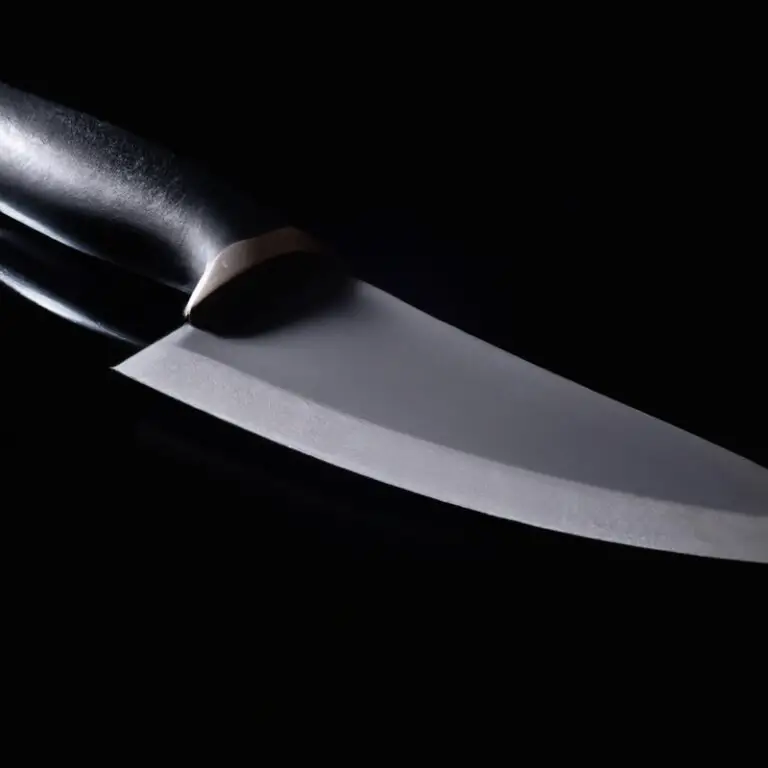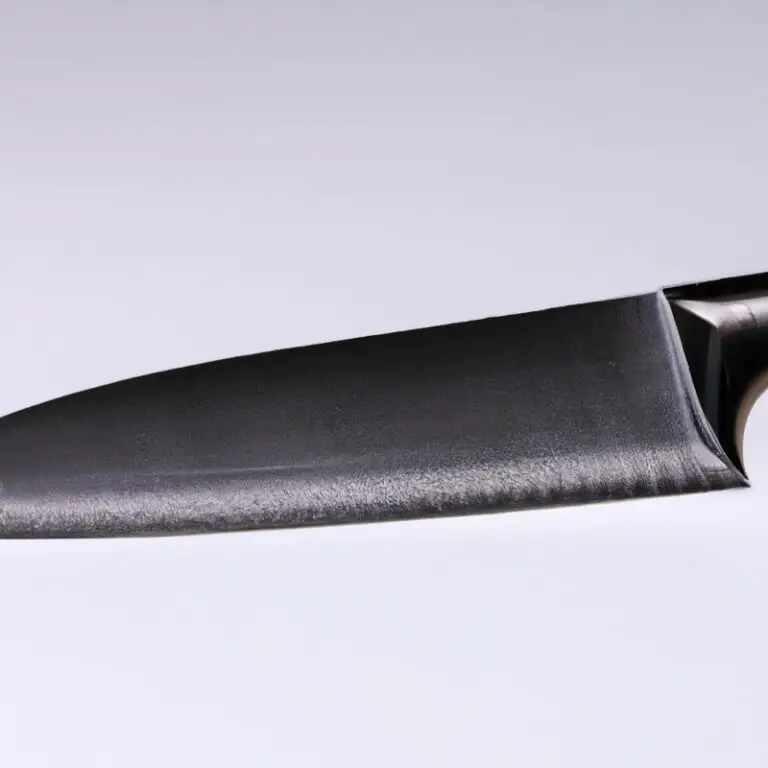Can You Use a Santoku Knife For Cutting Meat? Yes!
Key Takeaways:
- While a Santoku knife can be used for cutting meat, it is not the ideal choice as it lacks the necessary thickness and weight for heavy-duty tasks.
- If you decide to use a Santoku knife for meat, make sure to sharpen the blade to ensure a clean cut, and use a sawing motion for tougher cuts.
- For optimal performance and safety, it is recommended to use a meat-specific knife, such as a butcher knife, which is designed for the rigors of cutting meat.
- Remember to always follow proper handling and safety techniques when handling any type of knife, and always choose the right tool for the job to prevent accidents and injury.
If you are a food enthusiast, you know the importance of having the right tools in the kitchen. For any chef, a knife is the most important tool for preparing any meal – from the simplest dish to the fanciest feast.
But when it comes to meat cutting, using the right knife can make all the difference.
One common question that comes up is if Santoku knives are suitable for slicing meat. In this article, I’ll be sharing my personal experience and knowledge to help you understand the advantages and disadvantages of using a Santoku knife for meat cutting, as well as how to properly select, use and maintain your Santoku knife.
| Knife type | Best for | Can be used for cutting meat? |
|---|---|---|
| Chef’s knife | Dicing, slicing, chopping | Yes |
| Santoku knife | Mincing, chopping | Yes, but not recommended |
| Boning knife | Removing meat from bones | Yes, preferred for this task |
What is a Santoku knife and how does it differ from other knives?
A Santoku knife is a Japanese-style knife that has a shorter and wider blade than a traditional Western-style chef’s knife. It is typically made of harder steel, allowing for a sharper edge and more precise cuts.
Santoku knives are designed for slicing, dicing, and chopping with ease, making them a versatile tool in the kitchen.
Unlike a traditional chef’s knife, the Santoku knife has a flat edge with a rounded tip, allowing for a more rocking motion when chopping. This rocking motion is ideal for handling vegetables, but can also be used for cutting meat.
While Santoku knives can be used for meat cutting, it’s important to ensure that the knife has a sharp blade and that it’s used properly to prevent damage to the knife or potential injury.
Additionally, Santoku knives may not be suitable for heavier meat cutting tasks, such as breaking down a whole chicken. Overall, Santoku knives are a great addition to any kitchen, with their unique design and versatility making them a popular choice among chefs and home cooks alike.
Understanding the importance of using the right knife for the job
Using the right knife for the job is essential for efficient and safe cutting. Each type of knife is designed for a specific task, and using the wrong knife can lead to damaging the knife or injury to yourself.
The shape, size, and length of the blade play a crucial role in providing accuracy and precision while cutting.
When it comes to cutting meat, the right knife will make your job easier, faster, and more enjoyable. Therefore, using a Santoku knife for meat cutting may not be the best option as it may not provide the sharpness and thickness required to cut through meat bones, tendons, and fats effortlessly.
Understanding the importance of using the right knife for the job will help you to reduce frustration and prevent wasting money on the wrong knives for specific tasks.
How to properly select a Santoku knife for meat cutting
When selecting a Santoku knife for meat cutting, there are a few important factors to consider:
- Blade Material: Look for a high-quality stainless steel blade that maintains its sharpness and durability. VG-10, AUS-10, and Damascus steel are popular choices.
- Blade Length: For meat cutting, a blade length of 7-9 inches is generally ideal. Anything shorter may not provide enough cutting power, while anything longer can be difficult to maneuver.
- Blade Thickness: A thinner blade is better for precise cutting, while a thicker blade can handle tougher cuts of meat. Consider the types of meat you’ll be cutting and select a blade thickness accordingly.
- Handle Comfort: The handle should be comfortable to grip and provide a secure hold, even when wet. Consider the material and design of the handle and choose what works best for your grip.
- Price: Santoku knives can range greatly in price, from budget-friendly options to high-end models. Consider your budget and prioritize quality and durability over price.
By considering these factors and selecting a Santoku knife that meets your needs, you can ensure an efficient and effective cutting experience for meat.
The most efficient way to use a Santoku knife for meat cutting
To use a Santoku knife efficiently for meat cutting, follow these steps:
- Start by choosing the right meat – look for pieces that are thawed, dry, and easy to handle.
- Hold the knife with a firm grip, using your dominant hand, and place your other hand on top of the meat to hold it steady.
- Use a rocking motion to slice the meat, moving the knife back and forth in a fluid motion.
- Cut against the grain, which will help prevent tough and chewy cuts.
- Be sure to use a sharp blade to reduce the risk of injuring yourself and ensure cleaner cuts.
Keep in mind that proper technique, a sharp blade, and the right meat selection play a significant role in achieving efficient meat cutting. With practice, you can master the techniques needed to use a Santoku knife successfully for meat cutting.
Proper maintenance and care for your Santoku knife
Proper maintenance of your Santoku knife is crucial for its longevity and performance. After every use, clean the blade with warm water and mild soap then dry it thoroughly.
Avoid using abrasive pads or detergents as they can cause damage to the blade.
Store your knife in a knife block or sheath to prevent damage and keep it sharp. Sharpen the blade regularly with a sharpening stone or honing rod to maintain its edge.
Do not store your knife in a damp or humid environment as this can cause rust or corrosion.
Use a cutting board made of wood or plastic to avoid damaging the blade. With proper maintenance and care, your Santoku knife can last for many years and deliver excellent cutting performance.
Advantages and disadvantages of using a Santoku knife for meat cutting
Advantages of using a Santoku knife for meat cutting:
- Versatility: Its design allows for efficient slicing and dicing of different types of meat.
- Comfort: The ergonomic handle and lighter weight reduce fatigue during prolonged use.
- Precision: The thin, sharp blade enables better control for more precise cuts.
- Aesthetic value: Its unique appearance adds beauty and character to your kitchen.
Disadvantages of using a Santoku knife for meat cutting:
- Limited use for thicker cuts: The blade’s shorter length may restrict the ability to cut through thicker meat or bones.
- Specialized care: Its thin blade requires extra care and maintenance to prevent damages and prolong its lifespan.
- Not suitable for rocking motion: Its straight edge hinders the effectiveness of a rocking motion, which can be necessary for certain meat cutting techniques.
It’s important to note that while a Santoku knife can be a useful tool for meat cutting, it may not be the best option for all situations. It’s essential to assess your needs and preferences before making a choice.
Common mistakes when using a Santoku knife for meat cutting
Common mistakes when using a Santoku knife for meat cutting include using a dull knife, using an improper technique, and using excessive force. A dull knife can be dangerous and make the cutting process more difficult.
It is important to sharpen the Santoku knife regularly and hone it before each use.
Using the wrong technique, such as slicing instead of chopping, can also lead to uneven cuts and difficulty in achieving the desired thickness. Lastly, using excessive force can damage the blade and make the knife less effective.
It is important to let the knife do the work and not to force it through the meat.
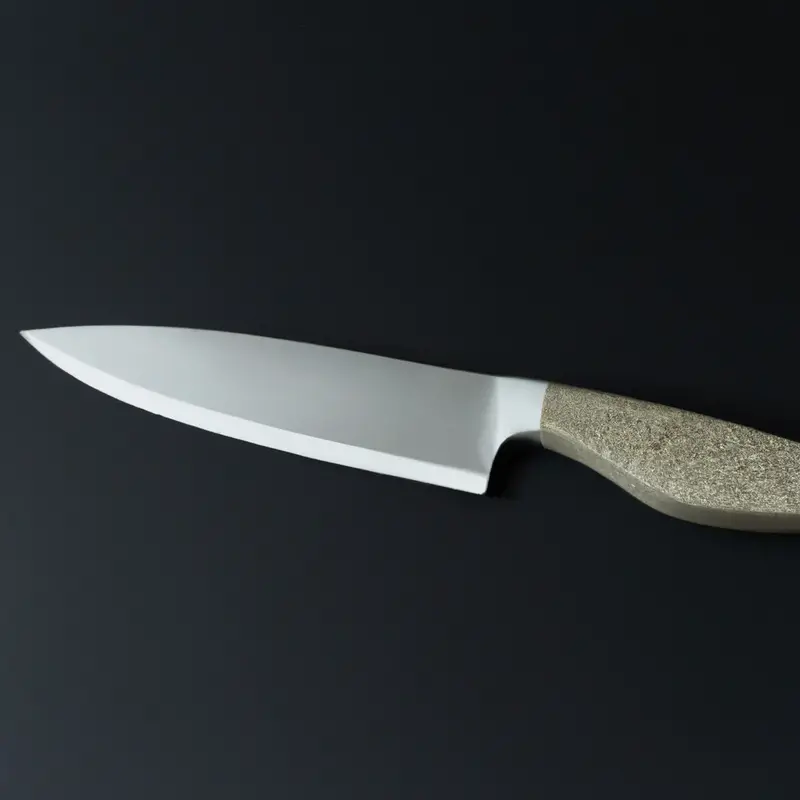
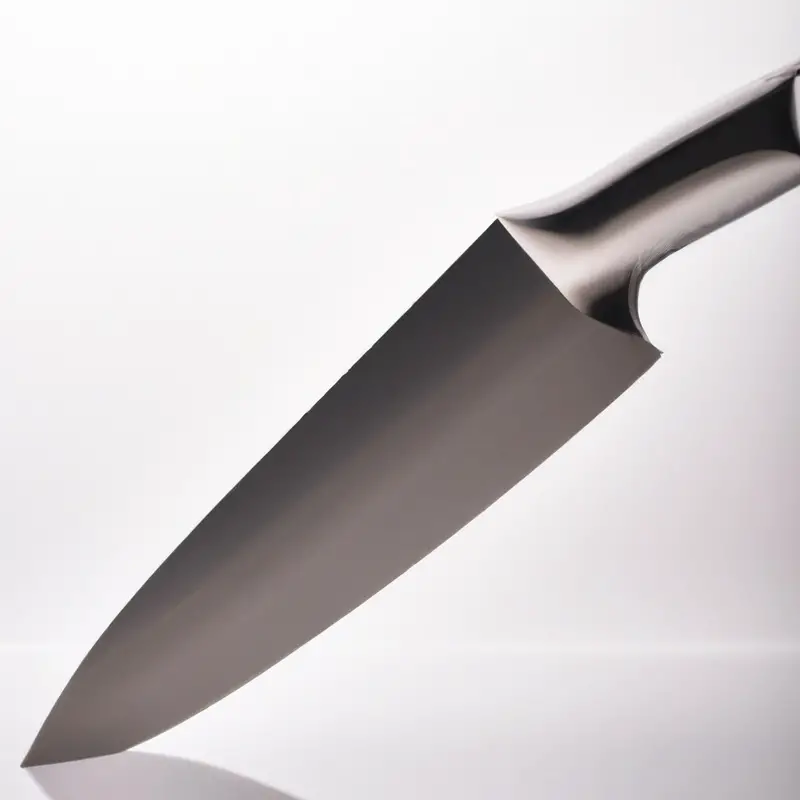
Comparing Santoku knives and other knives for meat cutting
When it comes to comparing Santoku knives and other knives for meat cutting, it’s important to understand their key differences. While most knives can cut meat, Santoku knives are specifically designed for precision cutting and slicing.
They feature a shorter blade than traditional chef’s knives and a unique edge design that allows for thin slicing without tearing or crushing the meat’s fibers.
Compared to other meat-cutting knives, such as cleavers or boning knives, Santoku knives are more versatile and can be used for a variety of tasks beyond just meat cutting. They’re also lighter and easier to control, making them a great choice for home cooks or those with smaller hands.
However, it’s important to note that Santoku knives may not be the best choice for cutting through bones or tougher cuts of meat.
In these cases, a heavier, stronger knife like a cleaver or boning knife may be more appropriate. Ultimately, the choice between a Santoku knife and other meat-cutting knives comes down to personal preference and the specific task at hand.
It’s always best to have a variety of knives in your kitchen arsenal to ensure that you have the right tool for the job.
Tips for cutting different types of meat with a Santoku knife
To get the best results when cutting meat with a Santoku knife, follow these tips:
- For tougher cuts, such as beef or pork, use a sawing motion, using the entire length of the blade.
- For thinner cuts, like chicken or fish, use a slicing motion, cutting through the meat in a fluid, consistent motion.
- When cutting large pieces, such as roasts or steaks, use the entire length of the blade, using a rocking motion back and forth to slice through the meat.
- Always ensure your knife is sharp, as a dull blade can damage the meat and make it more difficult to cut.
- Use the tip of the blade for precision cutting, such as removing fat or trimming skin.
- Never twist or turn the knife while it’s in the meat, as this can cause damage to both the knife and the meat.
By following these tips, you’ll be able to make precise, clean cuts of meat using your Santoku knife.
Popular Santoku knife brands for meat cutting
Some popular Santoku knife brands for meat cutting include Wusthof, Shun, Global, Miyabi, and Dalstrong. These brands offer high-quality, sharp, and durable knives that can handle different types of meat.
Wusthof and Shun are known for their traditional and elegant designs, while Global and Miyabi offer a more modern and lightweight approach.
Dalstrong stands out for its high-performance and affordable pricing. Regardless of the brand, it’s important to choose a Santoku knife with a sharp blade, comfortable handle, and proper weight for efficient meat cutting.
Final Verdict
A Santoku knife can be a highly effective tool for cutting meat if used properly. Understanding the importance of selecting the right knife for the job and following best practices for use can lead to precision cuts and a more efficient culinary experience.
Remember to regularly maintain and care for your Santoku knife to ensure its longevity and usability.
While there may be some disadvantages to using a Santoku knife for meat cutting, its unique design and versatility make it a popular choice among professional and amateur chefs alike. By following the tips and insights provided here, you can confidently select and utilize a Santoku knife for all your meat cutting needs.
Trust in the reliability of your knife and your own expertise, and enjoy the satisfaction of a job well done.

